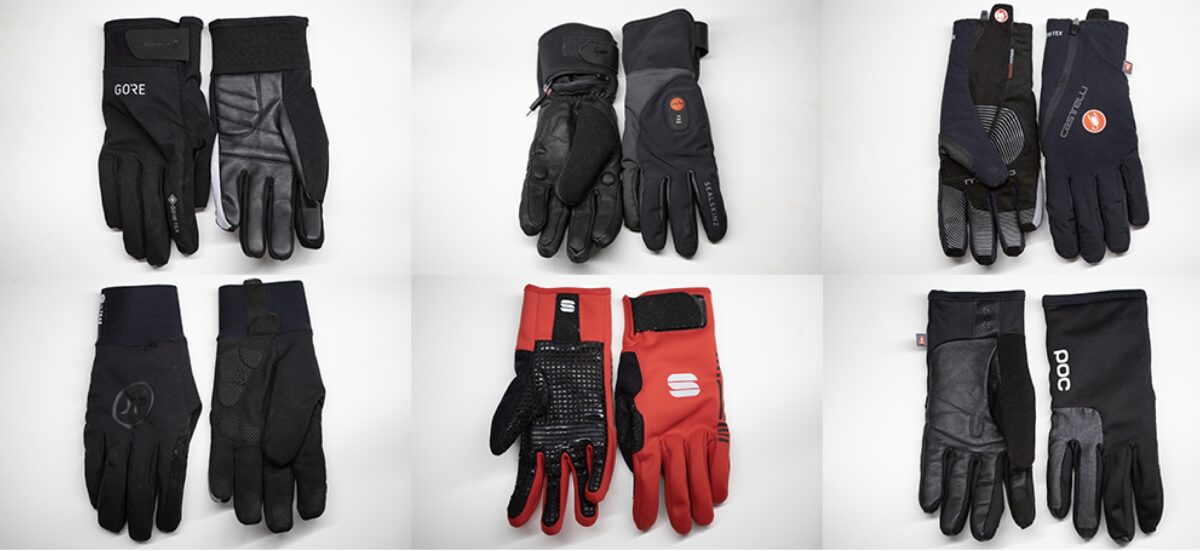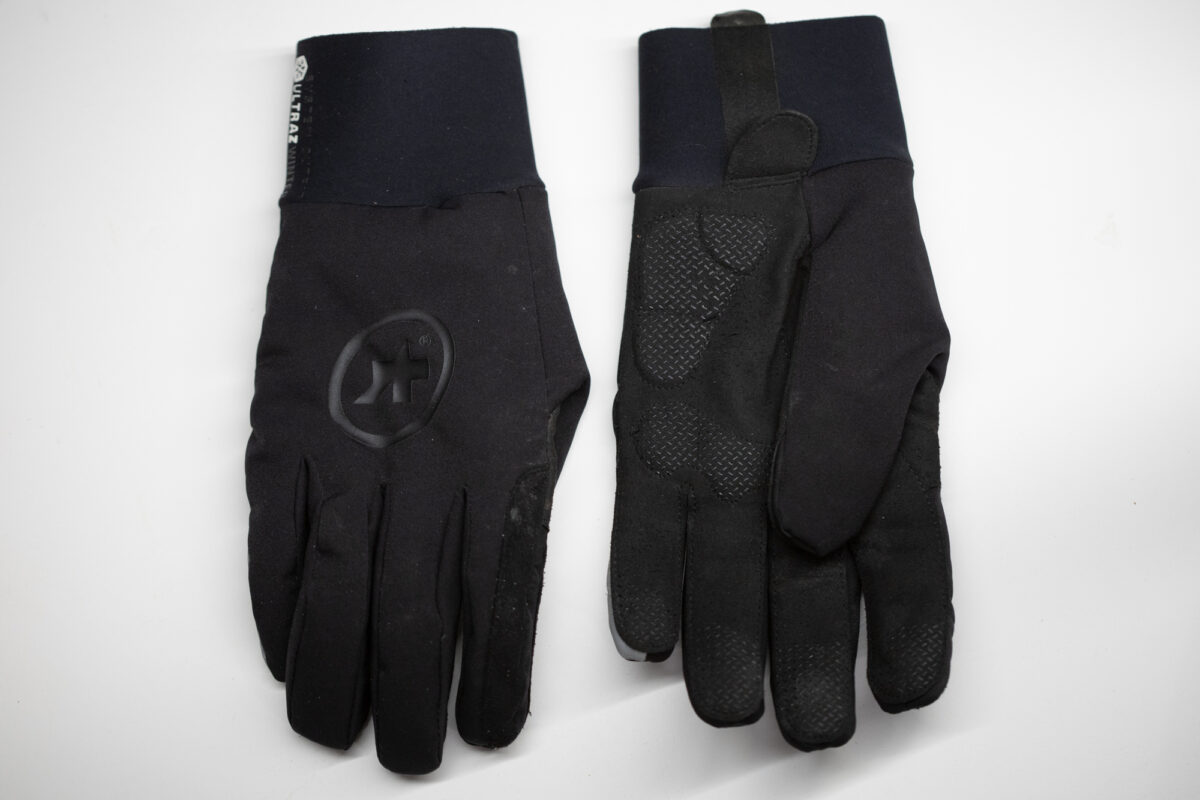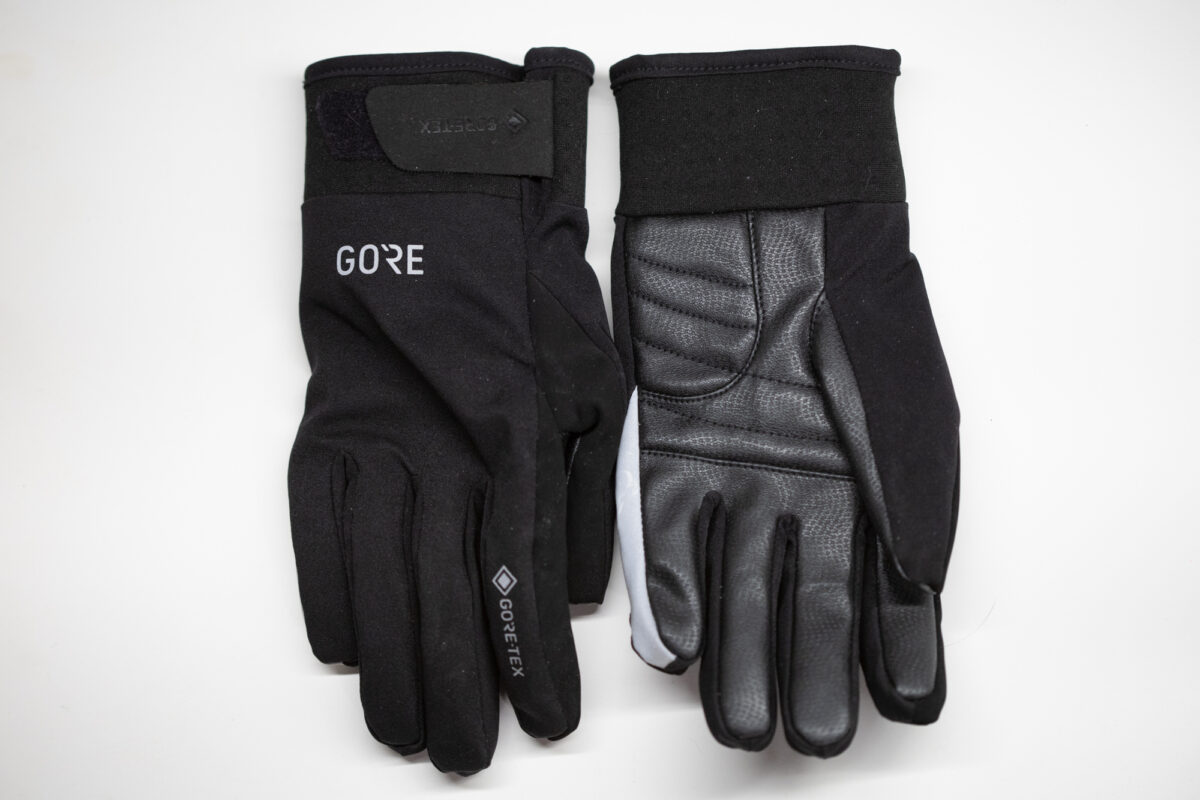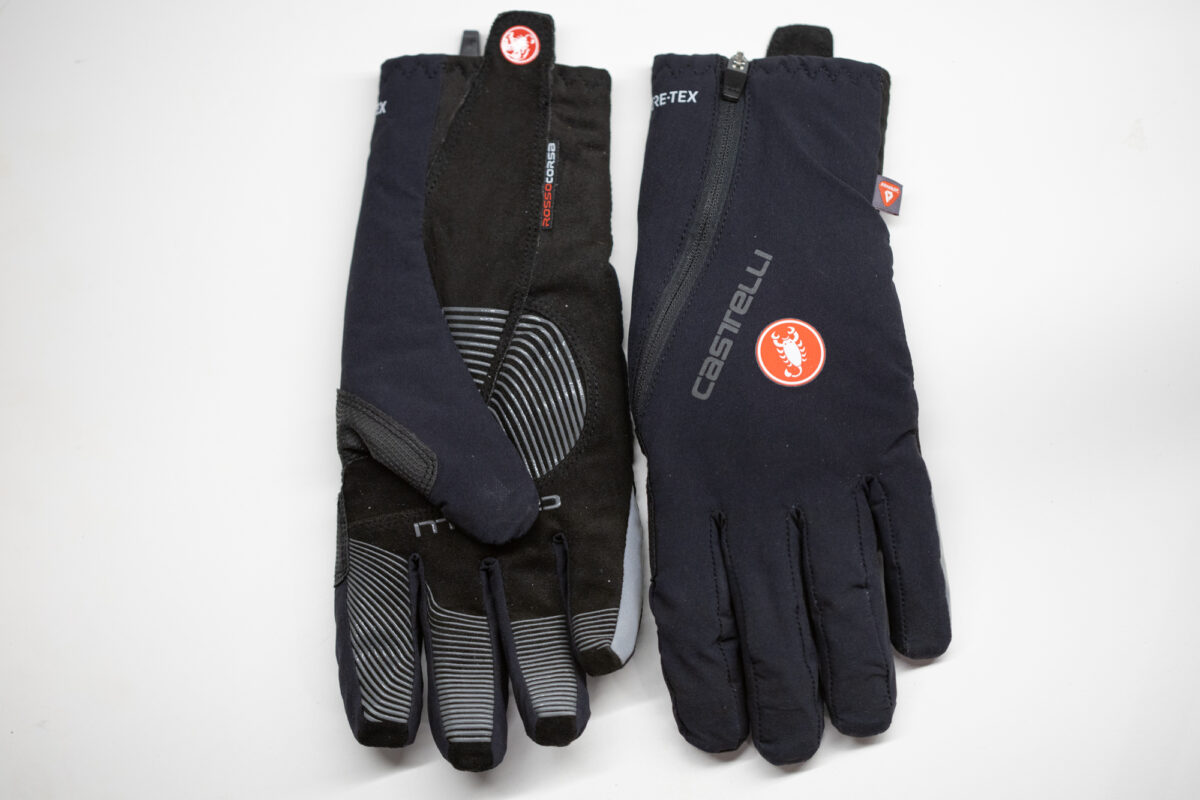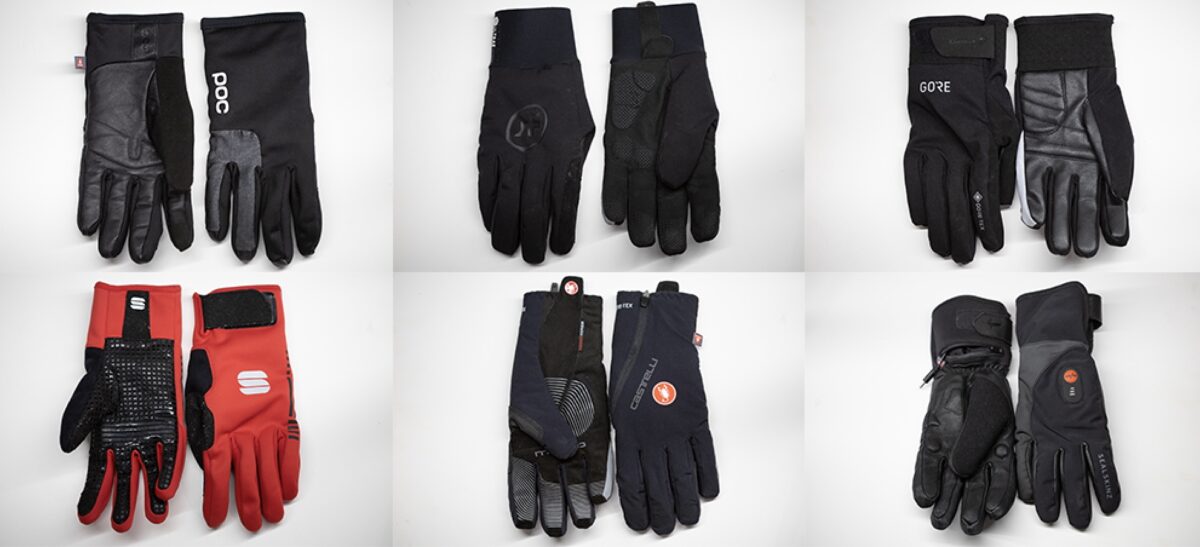
(Photos: Josh Ross/BikePortland)
Everyone wants the magic glove that will keep them warm as they spend hours in the rain and cold that defines Portland winter riding.
Sorry to be the bearer of bad news, but it doesn’t exist.
No matter what a company claims, no glove I have experienced will keep you dry for more than a couple of hours
I get a lot of questions about winter cycling gloves, and despite trying lots of options I don’t think there is a definitive answer. No matter what a company claims, no glove I have experienced will keep you dry for more than a couple of hours. When I head out for a big ride (and for me, “big” is like seven hours of riding time) this time of year, I expect to need at least four pairs of gloves. That equates to about one pair of gloves for every hour and 45 minutes of riding.
In this review, I’ll take a closer look at six different five-finger winter gloves I’ve tested that range in price from $80-$100. Unlike some of my reviews, I won’t pick a best option because none of these stand out as a clear winner. And at the end, I’ll share a roundup of some other options.
POC Thermal – $90
The POC Thermal uses a faux leather palm with no silicone grip material and only very light padding below the knuckles. They have touchscreen compatibility on the first finger and thumb tips. There’s no closure system at the cuff and even though you might not notice the pull tab, it’s integrated into the cuff in the form of a center section of the faux leather. The selling point of these is visibility with a very bright orange color available and a large section of reflective material covering the back of the outside two fingers.
Assos Ultraz Winter – $125
For the Assos Ultraz Winter glove (my photo is an older version, but the new one isn’t that different), Assos uses their own fabric technology. It’s a softshell membrane that’s not so different from Gore-Tex. The palm is faux suede with padding at the ulnar nerve and a good amount of silicone grip material. The cuff is long with an unfinished edge but there are two different pull tabs to get them on. I’m a huge fan of Assos winter gear but I don’t recommend paying the premium for these given the performance is not any different from less expensive options.
Advertisement
Gore Wear C5 Gore-Tex Thermo – $95
The C5 from Gore keeps its underlying technology a secret, but I do know that the “Gore-Tex” branding is their waterproof line and “Infinium” is their warmer, non-waterproof, version. The feature that stands out on the C5 is that the exterior is harder-wearing. The palm is a faux leather and the upper is the hardest fabric in the bunch. In the palm you do get a bit of padding at the ulnar nerve and at the base of the knuckles, but you don’t get touchscreen compatibility. The closure system is hook-and-loop with the hook side on the flap. There’s no pull tab at the wrist. These often go on sale, so if you can find a deal then you get similar performance for less money.
Sportful Sottozero – $80
Sportful has the Sottozero and the Fiandre glove and the marketing says the cold performance is similar, but the Fiandre has better wet weather performance. I have both gloves but I don’t agree with that assessment. The Sottozero is warmer and they both soak through, so enjoy the warmth while it lasts! What’s nice about Sportful gloves in general is that they love to use lots of silicone grip on the palm. It’s a joy to hold the controls and these have touchscreen compatibility too. The closure system is hook-and-loop but this time the hook is attached to the immobile side. The closure is also tenacious and you’ll end up using your teeth. There is an integrated pull tab in the cuff and the color options are nice if you want a bit of style in your gloves.
Castelli Espresso GT – $120
These Castelli Espressos actually stand out from the crowd a little. It’s subtle, so it’s tough to say it’s worth the extra money, but they do last just a little bit longer than other options on this list. It’s the same Gore-Tex membrane as Gore Wear uses, so it might just be that Primaloft is a little better at holding some heat as it starts to get soaked. The closure system is also a little different, although this time it’s not really better. The zipper does mean you never have to worry about snagging expensive clothes on a hook-and-loop system but it’s also essentially impossible to unzip without first removing the glove. The palm uses lots of silicone, lacks touchscreen compatibility, but has a nice big pull-tab for easy removal.
Sealskinz Heated Cycling Gloves – $160
The Sealskinz are the only cycling-specific heated glove on the market. It’s hard to say you absolutely need cycling-specific gloves, but they do integrate pads across the palm and under the knuckles. Even without the battery these are well made and warm gloves. They cost a bit more and the price seems reasonable. What’s less reasonable is that they are not washable. The heating elements do go all the way to the fingertips but the heat is concentrated at the back of the palm. The battery life numbers they give are accurate and you can buy extra batteries if you need them. What these gloves do really well is provide heat when your body isn’t making it. Other options work fine when you start climbing, but if you are cruising along or descending, and aren’t making much heat then it’s nice to have external heat. They will soak through like all the rest though and if it’s cold enough, no amount of heating does much once they’re wet. I experienced this on Christmas Eve on a long ride and it switched back and forth between hard rain and snow. That same ride I also had one glove turn on in my bag and waste a bit of heating time. I recommend unplugging the battery for transport to avoid that fate.
Other solutions
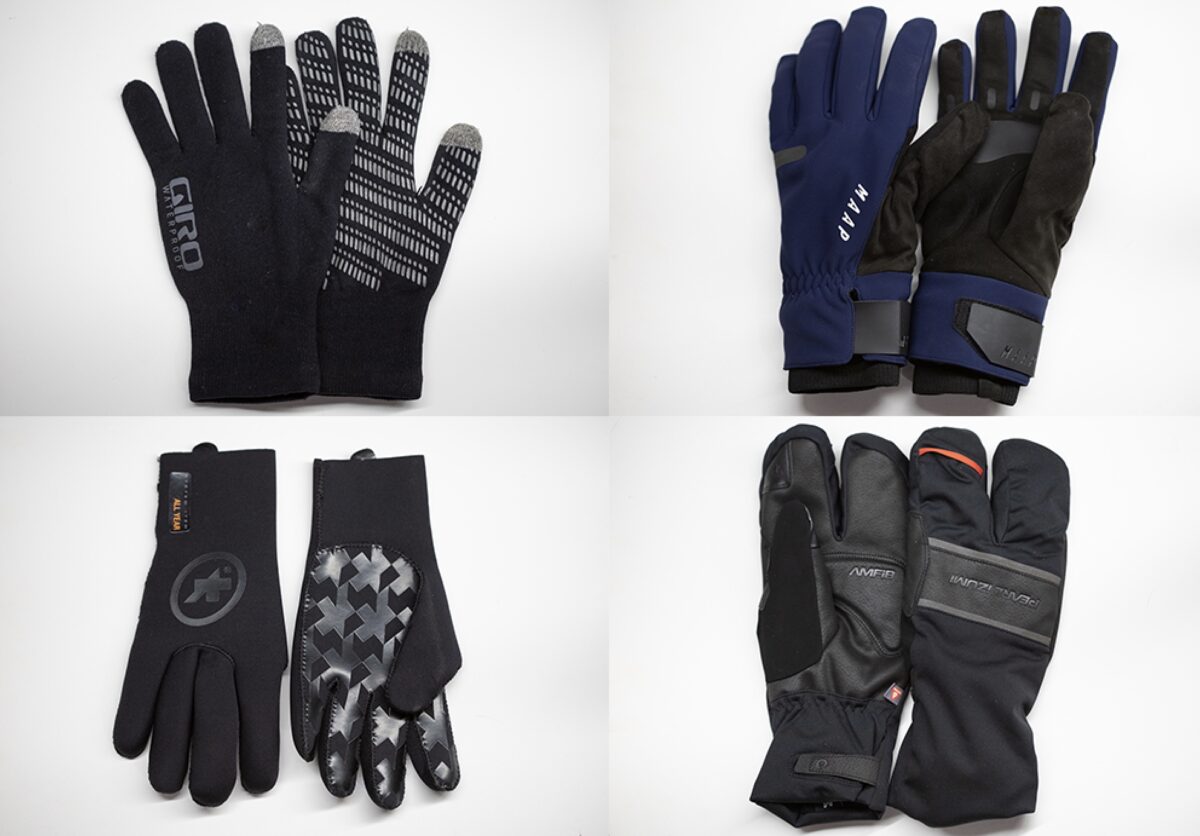
As I said, this article covered a very particular type of glove. It’s not the only option out there though. Sticking to five finger gloves there are also deep winter options. These are warmer and bulkier with a price to reflect the extra engineering. Expect to pay around $150 for a deep winter cycling glove and don’t expect better wet weather performance, just better cold weather performance.
Another option is to go for a mitten or lobster type glove. If you think you need more warmth and are willing to give up dexterity, there are a number of options on the market that group 2-3 fingers together. The pricing stays in the $80-$100 range and they are definitely warmer. It is more of a hassle to use your hands though and you still get about the same wet weather performance.
If you want to keep your hands dry, neoprene gloves are available for cycling and they do indeed work great in wet weather. What they don’t do is work in cold and wet weather. At 50 degrees, neoprene gloves are awesome but at 40 they don’t work. If we get more wet, cold, weather this year I am going to try neoprene gloves inside of deep winter gloves, but for now my advice is to avoid them.
Another radical idea is something like Bar Mitts. I’ve never used them but the few people I’ve discussed them with tend to rave about how awesome they are. My guess is that if you can stand the style they probably work really well. I hear Birkenstocks are comfortable too.
Waterproof knit gloves are a favorite around here. Popular options come from Giro, Sealskinz, and Portland-based Showers Pass. The designs are all similar. What you get is what feels like a wool knit glove but it’s a three-layer design with a membrane in the center. Like all softshell cycling garments they feel amazing but will become waterlogged with time. More important to this article though, they aren’t really appropriate for December/January riding as they aren’t warm enough. I expect some pushback on that statement but they don’t work for me and they aren’t designed to work for winter riding. Save them for fall and spring and you’ll love them!
Winter gloves are an ever evolving exploration. After years of riding in the cold I still see new options and find new solutions. This year I tested more gloves than ever and I still feel like there are more to try. Let me know in the comments if you have a favorite glove that works for you.
